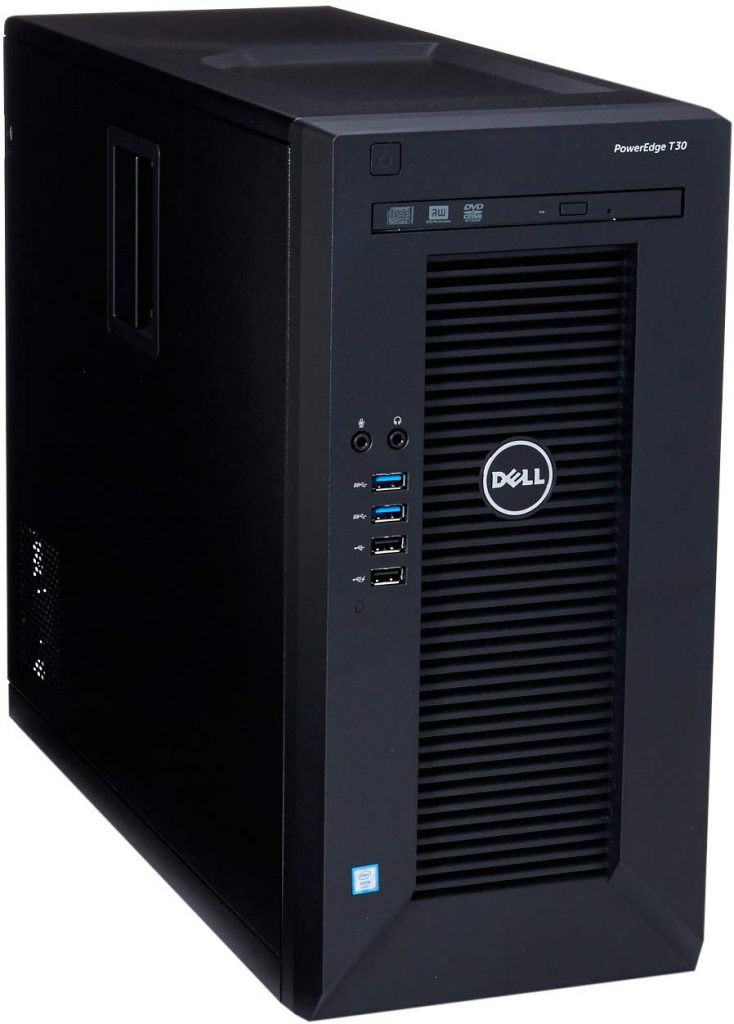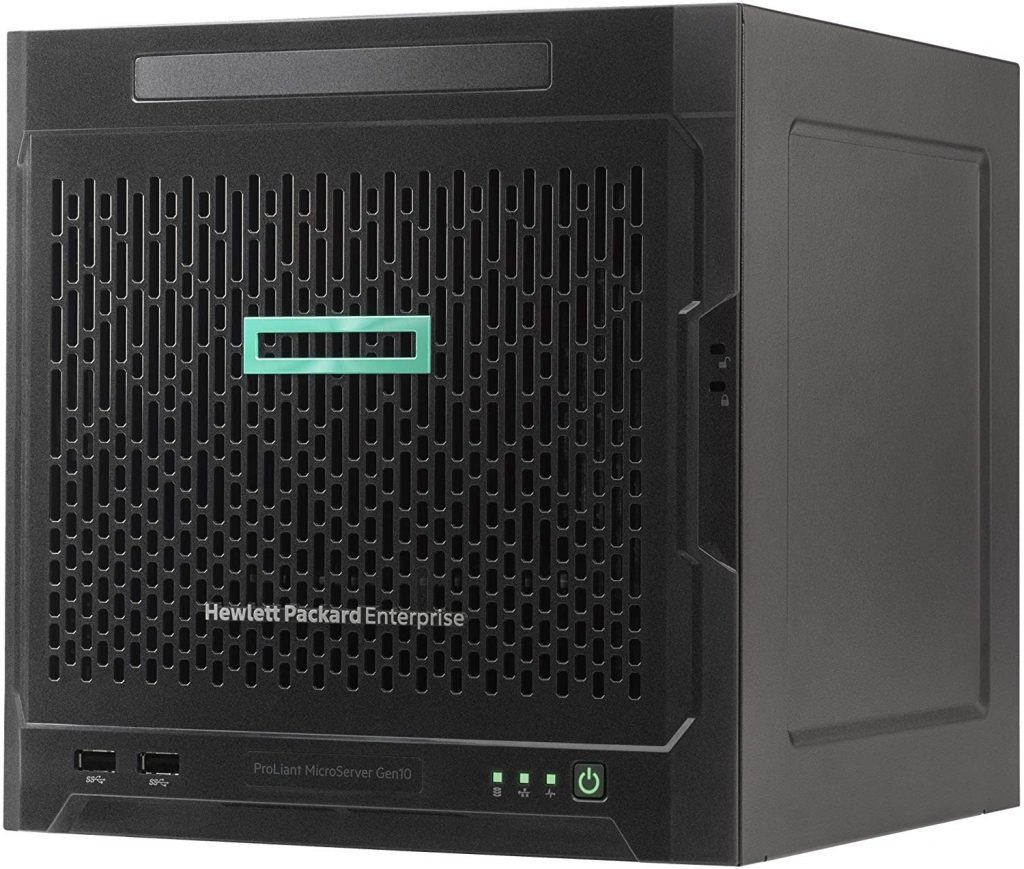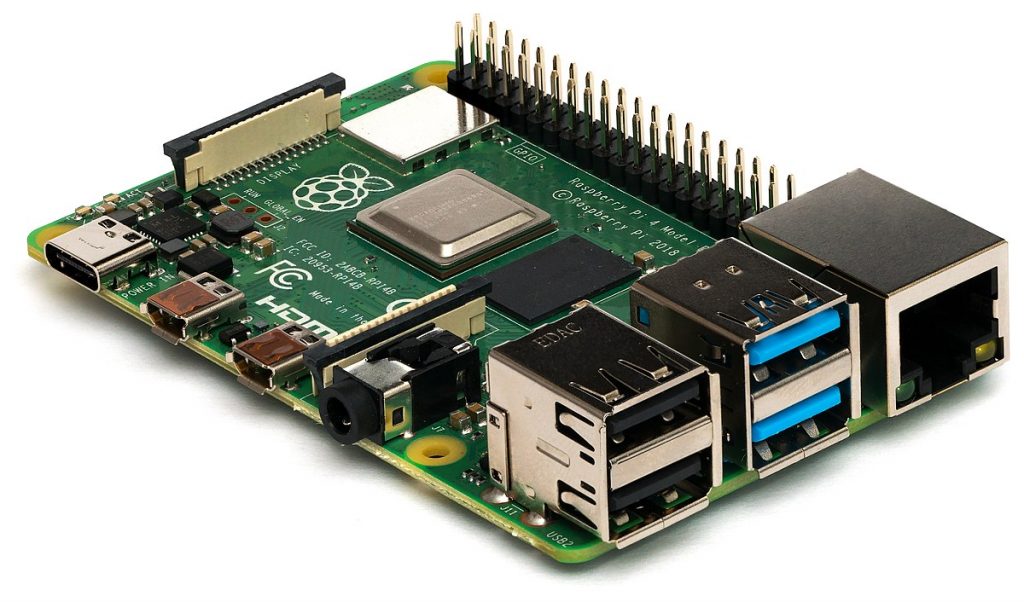Originally published January 18, 2020 @ 12:44 pm
A friend asked me what server I would recommend to run Linux. Yes, a very broad query. After a few followup questions we’ve determined the server will be used to run VMs, or Apache, or a database, or maybe a mail server, or FTP. Right…
This being a typical user request, the key is to offer as few options as possible. The goal here is not to pick the best server for the job and the budget. Since neither purpose nor budget are clear, the best we can hope for is not to pick the worst possible solution. Lowered expectations.
At this point users who’ve been reading the Internet inquire about a cloud solution. Wouldn’t it be easier and cheaper to get a cloud VM? No, it wouldn’t. Just take my word for it and leave it at that. Here are some better options.
2019 Dell PowerEdge T30
A very 1990s-looking tower server offering Intel Quad-Core Xeon E3-1225 v5, 8GB RAM, 1TB HDD, DVDRW, and HDMI for measly $370 on Amazon. For the price, this is an excellent deal.
Later on you can stick up to 64GB of RAM in it and four internal disks. There’s already an onboard RAID controller. This is one ugly but very capable server.
Fujitsu TX131 M3
This is another repackaged blast from the past offering Intel Xeon E3-1225 v6, 4GB RAM, and no disks. It does support four internal disks and has an onboard RAID controller. Just like the Dell T30, this guy can be upgraded to 64GB RAM.
In case you’re wondering, memory is important, especially if you want to run virtual machines. All this you can get for around $400 also on Amazon. Just keep in mind, you would need to get at least one hard drive (decent 1-TB 3.5″ drives run under $50 these days).
HP MicroServer Gen10
Now, I’ve been just fattening you up for this guy here. I have a little army of them spanning several generations, keeping my basement nice and warm. Here you’re getting and AMD Opteron X3421 with four cores running at 2.1 to 3.4GHz with 2MB L2 cache, 8GB RAM (upgradable to 16GB), no disks. It also has onboard RAID controller and up to four internal 3.5″ disks.
Due to relatively limited memory, this server is probably not the best choice for virtualization. Having said that, this is an HP ProLiant and it comes with HP ILO 4. If you don’t already know what this is, it may be difficult to adequately explain. Just consider my decades of professional Unix sysadmin experience and take my word for it: the ILO is what you want in a server.
You can get all this awesomeness from Amazon for around $500. Once again, you’ll need to get at least one hard drive to get you going.
Raspberry Pi 4 4GB
If you happened to be married and, as they say in Russia, your finances are singing romances, you may go for a more reasonable option: the Raspberry Pi. Don’t underestimate this board: quad core Cortex-A72, 4GB RAM, gigabit NIC, built-in wireless, dual USB 3 and two more USB 2 for peripherals – all in a very compact package.
While you’re not getting any RAID or hard drives here, the Pi’s two USB 3 ports allow you to connect RAID-enabled disk arrays with all the space you can afford. Here’s an Amazon offering for just under $100 that has all the bits to get you going.
Now, if you’re looking for a more complete Pi-based machine, things are not all that cheap. Here’s a sample breakdown of all the bits and pieces you may need.
| Item |
Description | Unit Price | Units | Price |
| 1 | Geekworm Raspberry Pi 4 X825 Metal Case | $29.89 | 1 | $29.89 |
| 2 | Crucial BX500 120GB SSD | $22.70 | 1 | $22.70 |
| 3 | Geekworm Raspberry Pi 4 Embedded Heatsink with Fan | $16.09 | 1 | $16.09 |
| 4 | Geekworm Raspberry Pi 4B/3B+/3B X735 Power Management | $28.89 | 1 | $28.89 |
| 5 | Geekworm Raspberry Pi 4 SATA Storage | $32.89 | 1 | $32.89 |
| 6 | Geekworm DC 5V 4A Power Adapter | $17.89 | 1 | $17.89 |
| 7 | Raspberry Pi 4 Model B 2019 4GB | $61.98 | 1 | $61.98 |
| 8 | Samsung 128GB 100MB/s (U3) MicroSDXC | $19.49 | 1 | $19.49 |
| TOTAL: | $229.82 |
What would I buy
For the purposes of virtualization or for running a database server one needs extra RAM and so I would go for either Dell or Fujitsu. Probably the latter: even though it costs a little more, comes with less RAM preinstalled, and no disks, the CPU is a little faster and I already have all the RAM and disks in a box somewhere down in the basement.
On the other hand, if I was looking for a new Web server, a NAS, an FTP server, just a general-purpose dev box, I would definitely go with the HP MicroServer. These little machines offer impressive quality, performance, and stability. And the ILO, of course.
Alas, at the moment I need nothing. And so I ordered the Pi kit. Should be arriving tomorrow, if Amazon is not lying. Probably gonna make another Kodi player out of it. You can never have enough of those. Also got this goofy-looking cooling fan. Gonna overclock the crap out of this thing…

Experienced Unix/Linux System Administrator with 20-year background in Systems Analysis, Problem Resolution and Engineering Application Support in a large distributed Unix and Windows server environment. Strong problem determination skills. Good knowledge of networking, remote diagnostic techniques, firewalls and network security. Extensive experience with engineering application and database servers, high-availability systems, high-performance computing clusters, and process automation.
























